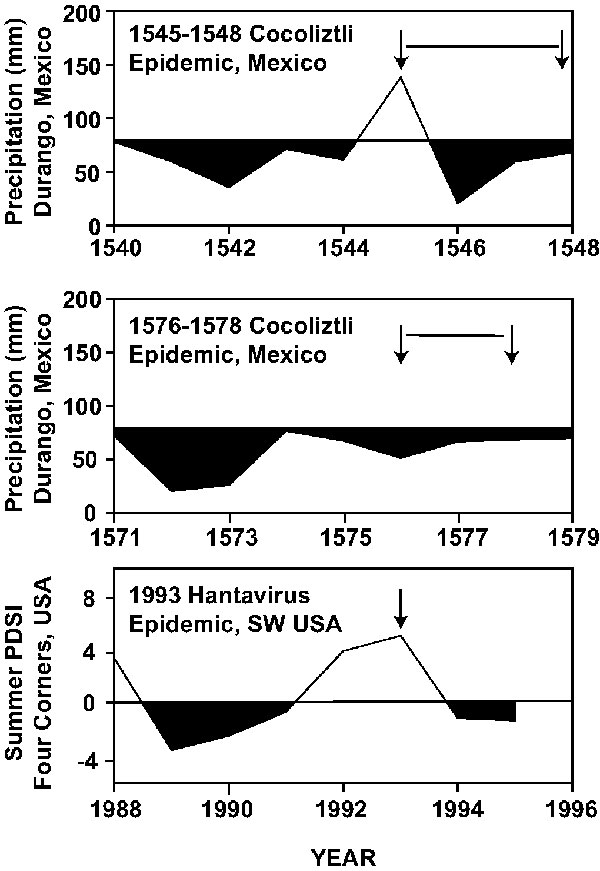Volume 8, Number 4—April 2002
Historical Review
Megadrought and Megadeath in 16th Century Mexico
Figure 3

Figure 3. The winter-spring precipitation totals estimated for each year in Durango, 1540–1548 (top), 1571–1579 (middle). Compared with the Palmer drought index, southwestern USA 1988–1995 (bottom). A tenfold increase in deer mice was witnessed in the southwestern USA during the 1993 outbreak, a year of abundant precipitation following a prolonged drought. The similar dry-wet pattern reconstructed for the 1545 epidemic of cocoliztli may have impacted the population dynamics of the suspected rodent host to aggravate the epidemic.
Page created: July 15, 2010
Page updated: July 15, 2010
Page reviewed: July 15, 2010
The conclusions, findings, and opinions expressed by authors contributing to this journal do not necessarily reflect the official position of the U.S. Department of Health and Human Services, the Public Health Service, the Centers for Disease Control and Prevention, or the authors' affiliated institutions. Use of trade names is for identification only and does not imply endorsement by any of the groups named above.